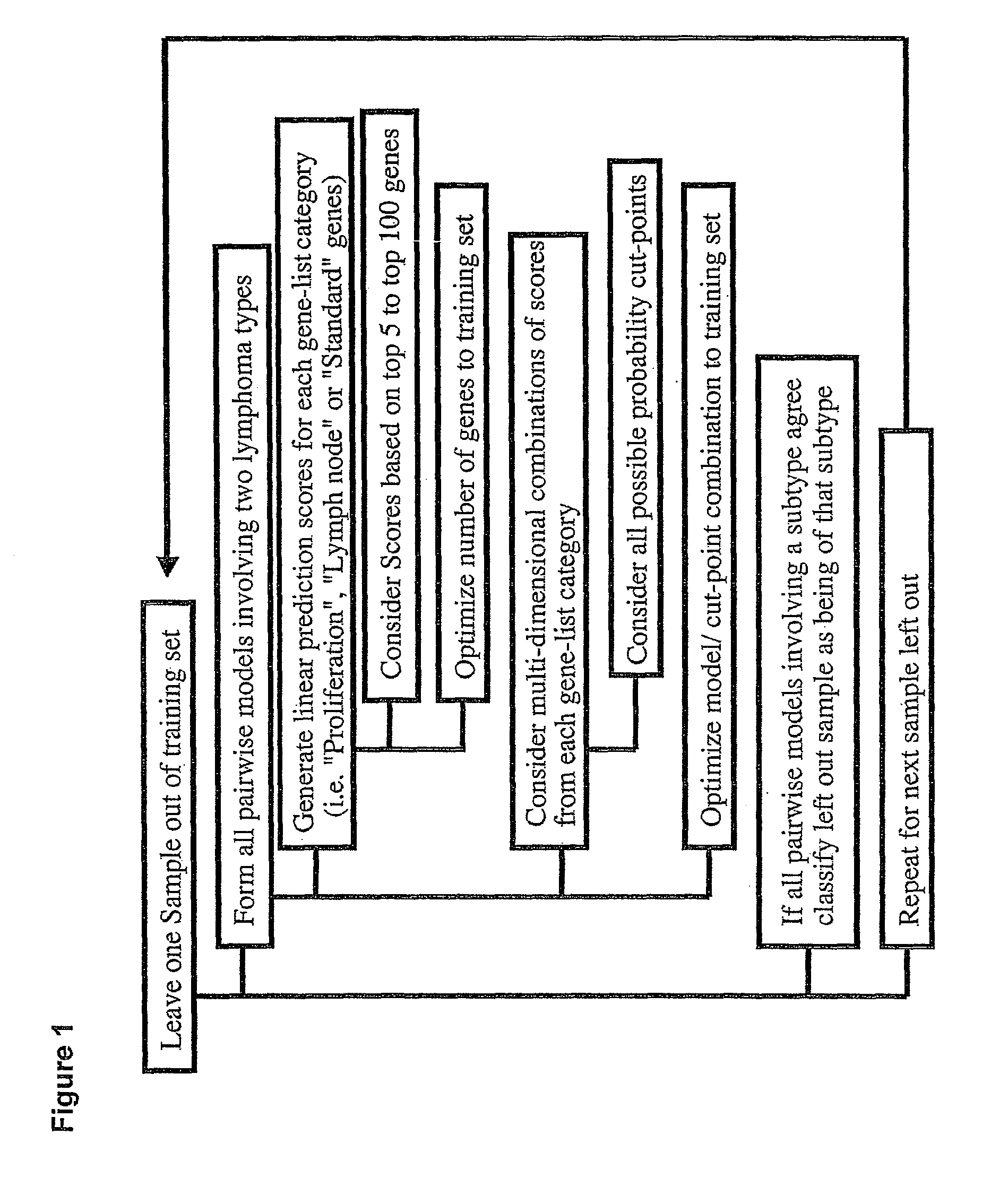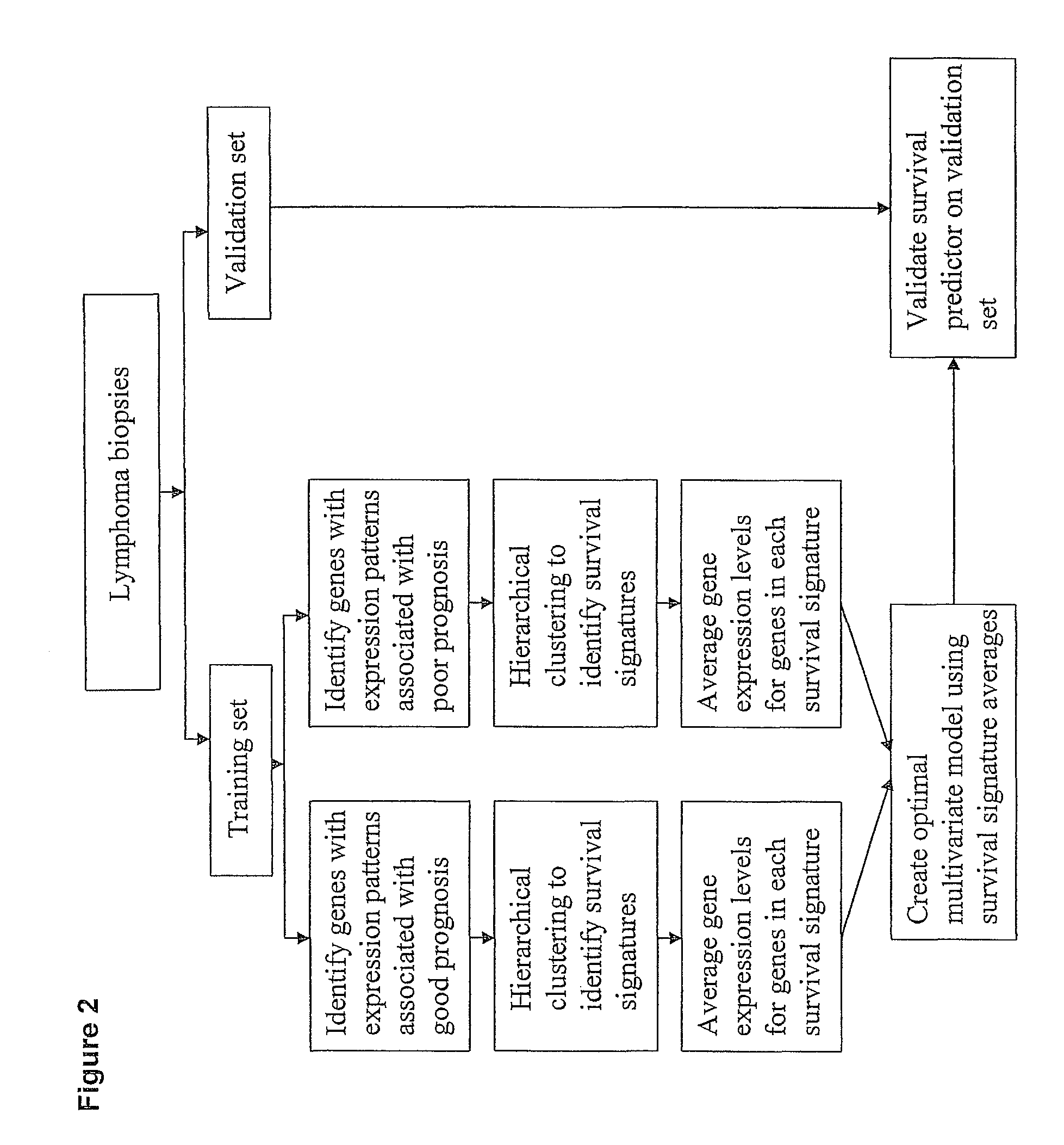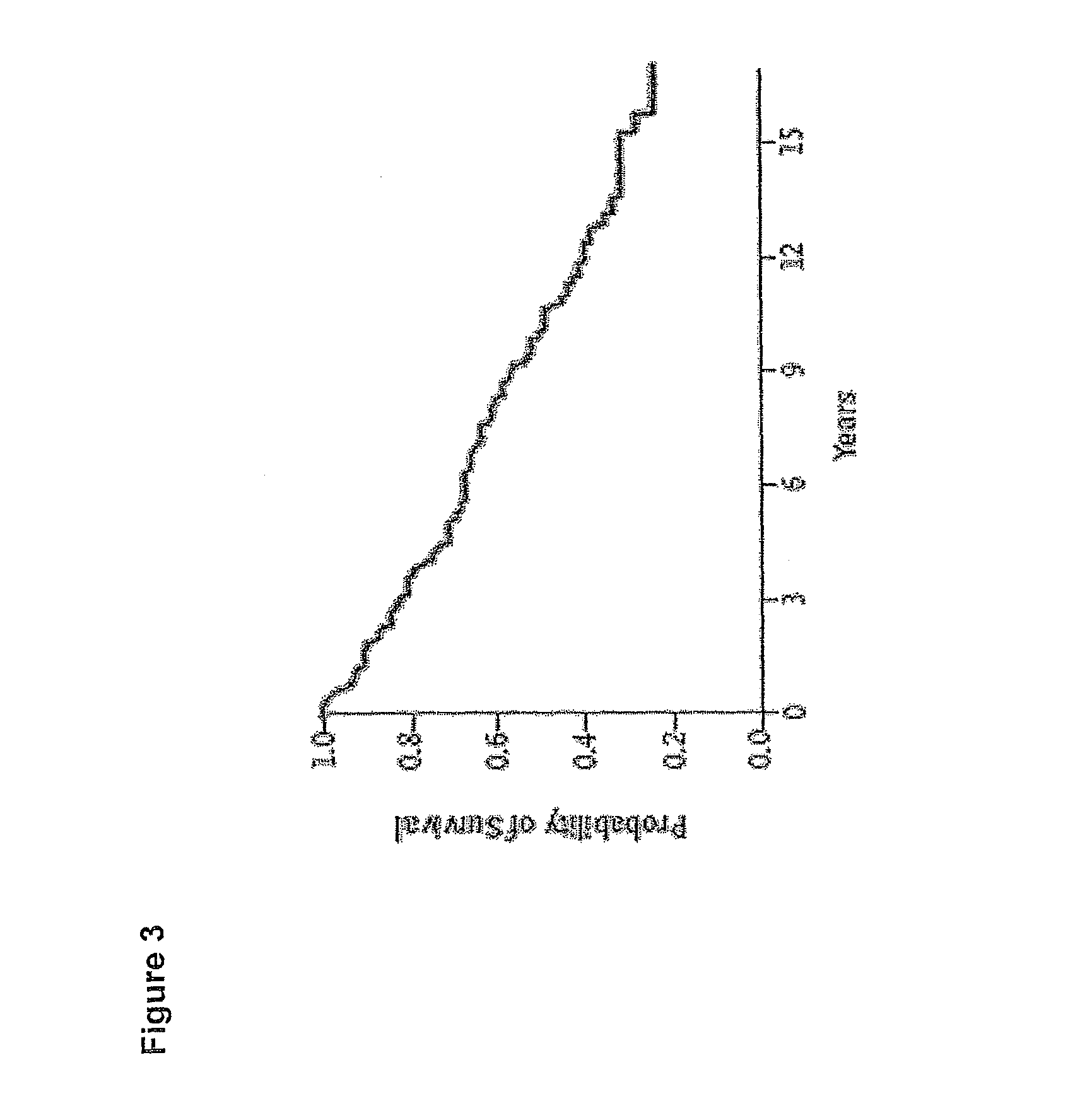Methods for diagnosing lymphoma types
a lymphoma type and lymphoma type technology, applied in the field of lymphoma type diagnosis, can solve the problem that patients assigned to the same diagnosis category often have noticeably different clinical outcomes
- Summary
- Abstract
- Description
- Claims
- Application Information
AI Technical Summary
Benefits of technology
Problems solved by technology
Method used
Image
Examples
example 1
Collection and Analysis of Gene Expression Data Using Affymetrix U133A and U133B Microarrays
[0107]568 cell samples representing various forms of human lymphoid malignancies were obtained by biopsy using known methods described in the literature. The samples were reviewed by a panel of hematopathologists and classified into the following lymphoma types based on current diagnostic criteria:[0108]231 diffuse large B cell lymphomas (DLBCL)[0109]191 follicular lymphomas (FL)[0110]26 Burkitt lymphomas (BL)[0111]21 mantle cell lymphoma (MCL)[0112]18 follicular hyperplasias (FH)[0113]17 small cell lymphocytic lymphomas (SLL)[0114]16 mucosa-associated lymphoid tissue lymphomas (MALT)[0115]13 splenic lymphomas (Splenic)[0116]10 cyclin-D1 negative lymphomas with MCL morphology (CD1negMCL)[0117]9 multiple myeloma (Mult_Myeloma)[0118]6 lymphoplasmacytic lymphomas (LPC)[0119]4 post-transplant lymphoproliferative disorders (PTLD)[0120]3 lymphoblastic lymphomas (Lymbl)[0121]3 nodal marginal zone ly...
example 2
Collection of Gene Expression Data Using the Novel Lymph Dx Microarray
[0136]The novel Lymph Dx microarray contains cDNA probes corresponding to approximately 2,734 genes. 174 of these are “housekeeping” genes present for quality control, since they represent genes that are most variably expressed across all lymphoma samples. Other genes represented on the microarray were selected for their utility in identifying particular lymphoma samples and predicting survival in those samples. The genes represented on the Lymph Dx microarray can be divided into four broad categories: 1,101 lymphoma predictor genes identified previously using the Affymetrix U133 microarray, 171 outcome predictor genes identified using the Affymetrix U133 microarray, 167 genes not found on the Affymetrix U133 microarray but represented on the Lymphochip microarray (Alizadeh 1999), and 1,121 named genes. The types of genes making up each of these broad categories are summarized in Table 1724, below, while the speci...
example 3
Development of a First FL Survival Predictor Using Gene Expression Data from Affymetrix U133A and U133B Microarrays
[0158]An analytical method entitled Survival Signature Analysis was developed to create survival prediction models for lymphoma. This method is summarized in FIG. 2. The key feature of this method is the identification of gene expression signatures. Survival Signature Analysis begins by identifying genes whose expression patterns are statistically associated with survival. A hierarchical clustering algorithm is then used to identify subsets of these genes with correlated expression patterns across the lymphoma samples. These subsets are operationally defined as “survival-associated signatures.” Evaluating a limited number of survival-associated signatures mitigates the multiple comparison problems that are inherent in the use of large-scale gene expression data sets to create statistical models of survival (Ransohoff 2004).
[0159]FL samples were divided into two equivale...
PUM
| Property | Measurement | Unit |
|---|---|---|
| density | aaaaa | aaaaa |
Abstract
Description
Claims
Application Information
 Login to View More
Login to View More - R&D
- Intellectual Property
- Life Sciences
- Materials
- Tech Scout
- Unparalleled Data Quality
- Higher Quality Content
- 60% Fewer Hallucinations
Browse by: Latest US Patents, China's latest patents, Technical Efficacy Thesaurus, Application Domain, Technology Topic, Popular Technical Reports.
© 2025 PatSnap. All rights reserved.Legal|Privacy policy|Modern Slavery Act Transparency Statement|Sitemap|About US| Contact US: help@patsnap.com



